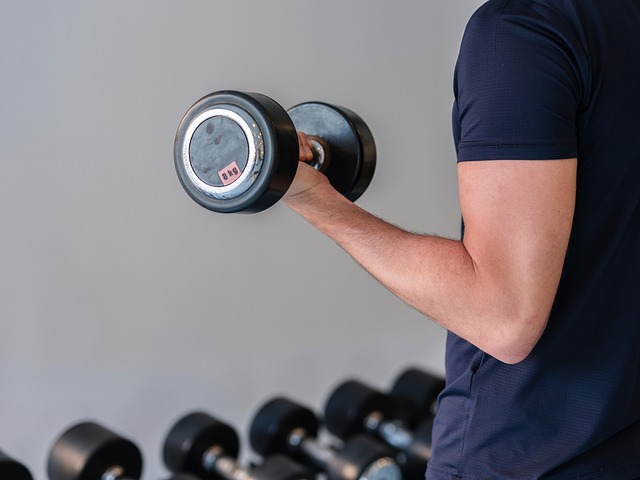Strength training is a cornerstone of physical fitness, offering benefits that span across all age groups. From children and adolescents to adults and seniors, strength training can enhance muscle development, improve bone density, boost metabolism, and support overall health. However, the approach to strength training must be tailored to suit the unique needs, abilities, and goals of each age group. In this article, we’ll explore how to adapt strength training programs for different stages of life, ensuring safety, effectiveness, and long-term success.
1. Children and Adolescents (Ages 6–17)
Key Considerations
- Growth and Development : During childhood and adolescence, bones, muscles, and tendons are still developing. It’s crucial to focus on proper form and technique to prevent injury.
- Fun and Engagement : Younger individuals are more likely to stick with an activity if it’s enjoyable. Incorporating games, challenges, or sports-specific exercises can make strength training appealing.
Recommended Exercises
- Bodyweight Movements : Push-ups, squats, lunges, planks, and bear crawls are excellent starting points. These exercises build foundational strength without requiring heavy weights.
- Light Resistance : Resistance bands, medicine balls, or light dumbbells (2–5 pounds) can be introduced gradually to teach proper lifting mechanics.
- Plyometrics : Jumping exercises like box jumps or skipping drills help develop power and coordination, which are beneficial for young athletes.
Safety Tips
- Avoid heavy lifting until skeletal maturity is reached (typically around age 16–18).
- Focus on full-body workouts rather than isolating specific muscles.
- Ensure supervision by a qualified coach or trainer to monitor form and progression.
2. Young Adults (Ages 18–35)
Key Considerations
- Peak Physical Potential : This age group is often at their physical prime, with high energy levels and quick recovery times. They can handle more intense workouts and heavier loads.
- Goal-Oriented Training : Many young adults train for specific objectives, such as building muscle, improving athletic performance, or enhancing aesthetics.
Recommended Exercises
- Compound Lifts : Squats, deadlifts, bench presses, pull-ups, and rows engage multiple muscle groups and maximize efficiency.
- Progressive Overload : Gradually increase weight, reps, or intensity to continually challenge the body and promote growth.
- High-Intensity Interval Training (HIIT) : Combining strength exercises with short bursts of cardio improves endurance and burns calories.
Safety Tips
- Warm up thoroughly before each session to prepare muscles and joints.
- Prioritize mobility work to maintain flexibility and reduce injury risk.
- Allow adequate rest between workouts to facilitate recovery.
3. Middle-Aged Adults (Ages 36–55)
Key Considerations
- Slower Recovery : As people age, their bodies take longer to recover from intense exercise. Joint stiffness and minor aches may also become more common.
- Hormonal Changes : Declining testosterone levels in men and hormonal fluctuations in women can affect muscle mass and fat distribution.
Recommended Exercises
- Moderate Weights with Higher Reps : Use lighter weights and perform 10–15 reps per set to minimize joint stress while maintaining muscle tone.
- Functional Movements : Incorporate exercises that mimic daily activities, such as carrying groceries or climbing stairs. Examples include farmer’s carries, step-ups, and kettlebell swings.
- Core Strengthening : Planks, bird-dogs, and Pallof presses help stabilize the spine and reduce back pain.
Safety Tips
- Focus on controlled movements and avoid excessive momentum.
- Incorporate stretching and foam rolling to alleviate tightness.
- Address any underlying injuries or chronic conditions with guidance from a healthcare professional.
4. Older Adults (Ages 56+)
Key Considerations
- Bone Density and Muscle Loss : Sarcopenia (age-related muscle loss) and osteoporosis (weakened bones) are common concerns among older adults. Strength training can counteract these issues.
- Balance and Stability : Falls are a leading cause of injury in seniors, so improving balance and coordination is essential.
Recommended Exercises
- Resistance Bands and Light Weights : These tools provide enough resistance to strengthen muscles without placing undue strain on joints.
- Bodyweight Exercises : Chair squats, wall push-ups, and seated leg lifts are safe options for beginners.
- Balance Training : Single-leg stands, heel-to-toe walks, and tai chi improve stability and reduce fall risk.
Safety Tips
- Start with low-intensity exercises and gradually increase difficulty as strength improves.
- Work with a trainer experienced in senior fitness to ensure exercises are appropriate.
- Monitor blood pressure and heart rate during workouts, especially if managing cardiovascular conditions.
5. Special Populations and Adaptations
Pregnant Women
- Focus Areas : Core stability, pelvic floor strengthening, and posture correction.
- Exercises : Modified planks, side-lying leg lifts, and prenatal yoga.
- Precautions : Avoid lying flat on the back after the first trimester and steer clear of heavy lifting or high-impact activities.
Individuals with Chronic Conditions
- For those with arthritis, diabetes, or heart disease, strength training should be adapted to accommodate limitations. Low-impact exercises and medical clearance are essential.
Athletes
- Athletes require sport-specific training to enhance performance. Plyometrics, agility drills, and advanced resistance techniques are often incorporated.
6. General Principles Across All Age Groups
Regardless of age, certain principles apply universally to effective strength training:
- Consistency : Regular exercise yields better results than sporadic efforts.
- Variety : Changing routines periodically prevents plateaus and keeps motivation high.
- Rest and Recovery : Adequate sleep and rest days are crucial for muscle repair and growth.
- Nutrition : A balanced diet rich in protein, healthy fats, and carbohydrates supports muscle development and overall health.

Leave a Reply